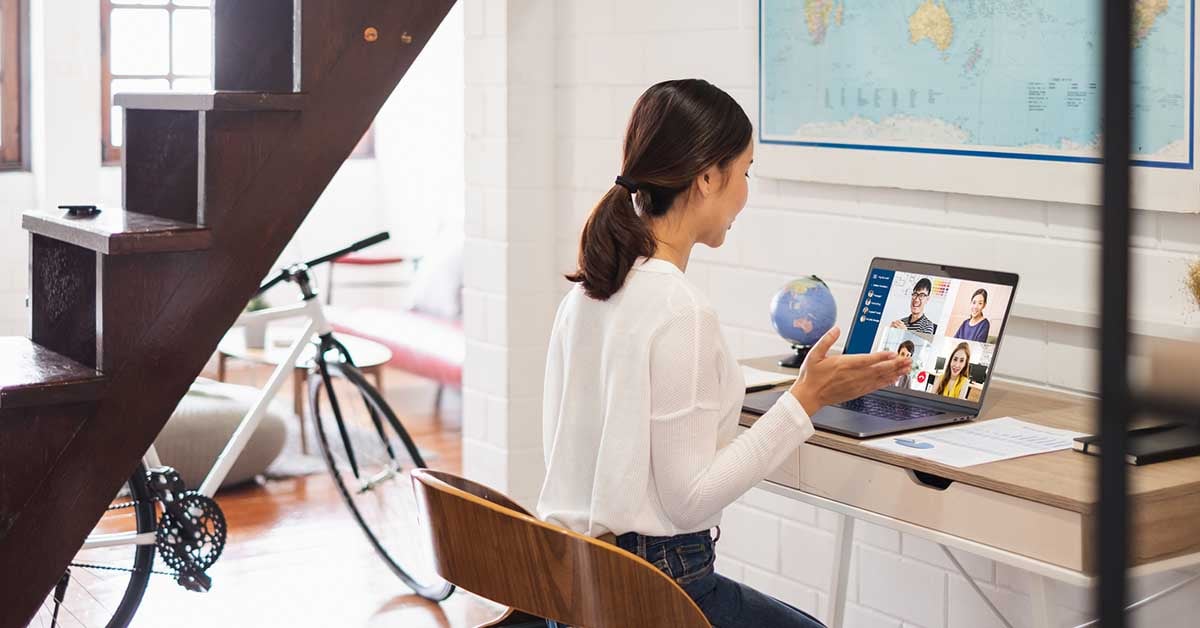3 min read
A quick guide to mobile workforce technology for remote employees
Technology has transformed the way we work and do business. With advances in cloud and mobile workforce technology, more and more companies around...
Benefit from smart ideas, lower costs, greater productivity. Choose from award-winning printers, software solutions and consumables
Personalised technology solutions to help your organisation gain a competitive advantage
Discover howWe combine professional expertise with a human kind of partnership
Get the right help and advice, register a product and see why our commitment to you matters.
Discover our brand, our global activities and commitments

While the way we worked prior to the pandemic was already changing, more employees than ever are now working from home. While the traditional office environment has its own stresses, the reality of remote working has the potential to put employees under a different kind of pressure. But, with the right approach, this new way of working can be both revitalising, and engaging. We've collected a number of wellness ideas for remote employees below to help you care for yourself and your team when you're not in the office together.
That people’s mental health may be suffering in the current crisis is not a surprise. Social isolation measures forced many companies to quickly implement remote working with very little planning. An overnight change is never without its challenges and this is no different.
The idea of working from home for longer than a day or two is completely alien to many. With the speed of change, some of the biggest challenges that workers face are the change of routine, the lack of face-to-face interaction and poor work-life balance as everything takes place in the one space. According to the 2019 State of Remote Work report, of the 2500 remote workers surveyed, 22 percent identified not being able to unplug from work as their biggest challenge, 19 percent said loneliness and 17 percent said collaboration and communication.
A 2020 article from Forbes suggests that those accustomed to office life and its steady rate of social interactions may see a deterioration in their mental health while working from home during the coronavirus pandemic, with isolation and burnout being two of the biggest concerns.
For many companies this will be a trial and error exercise, but there are a number of wellness ideas for remote employees that you can implement now to support your team during this difficult time.
The link between physical and mental health is undeniable; the way we take care of our bodies has a direct impact on our mood and overall wellbeing. When we eat well, exercise enough and have sufficient sleep, we tend to feel better.
Those who work from home should avoid the temptation of unhealthy snacks in the kitchen and other junk food. The sugar rush from such foods has a negative impact on concentration levels across the working day—not to mention the lack of nutritional value!
If possible, leaving the house for 20–30 minutes of exercise per day—a walk, jog or bike ride—is a great way to let off steam and disconnect from work. If you are unable to leave your house, there are plenty of online workout videos you can watch at home.
Adults also require between seven and nine hours of sleep per night to rest and perform optimally the next day. Less than that—or more—will mean a drop in productivity and an increase in physical and mental health problems. Reading a book instead of using your phone before bed will also help achieve a good night’s rest.
If you usually wake up at 7am and have a coffee while watching the news, or if you go for a run every Wednesday evening, then don’t let working from home change that. Remote workers should maintain their routine, from the time they get up in the morning to what they like to do in their spare time. Structure is extremely important for us to remain sharp and alert so that we can stay healthy and perform to the best of our ability at work.
It’s also helpful for remote workers to maintain relationships with their co-workers and managers. For workers who are used to their group coffee at 10:30am, why not organise a quick group call for a catch up with your at-home drink of choice? Staying in touch with colleagues helps to maintain a sense of belonging and is a good way to take a break from work.
A survey of workers conducted by Keio University in Tokyo found that 35 percent of workers who were telecommuting during the coronavirus lockdown had seen a deterioration in their mental health. 41.3 percent of those affected said they found it difficult to separate their work and personal lives. Furthermore, 39.9 percent weren’t able to do enough exercise and 39.7 percent had difficulty communicating with co-workers.
When working from home, it can be all too easy to feel like you should be connected to your work device from early morning to late at night. Remote working should not damage efficiency or lead us into bad habits like saying “I‘ll look at that report after dinner.“ A 2019 US survey by cloud infrastructure company Digital Ocean found that 82 percent of remote tech workers felt burnt out, with 52 percent reporting that they work longer hours than those in the office, and 40 percent feeling as though they needed to contribute more than their in-office colleagues.
The need for employees to follow working hours as they would in the office is vital. Catching up with friends, setting aside some downtime and maintaining healthy boundaries are as important as ever.
Key measures of success when it comes to remote working will naturally be efficiency and productivity, but they cannot come at the expense of employee wellbeing. If those working from home are unable to maintain a healthy work-life balance then their work will eventually be impacted as well as their health. Given the stress of a global pandemic and mass changes to the way we are all functioning in daily life, the responsibility of companies to actively promote employee wellbeing and share wellness ideas with remote employees has never been greater.
Building a resilient and productive hybrid work environment requires the right hardware, software and processes. Download our Guide to Hybrid Workplace Strategy for a step-by-step strategy for implementing an effective hybrid work model that equips your employees to work anywhere, any time.
KYOCERA Document Solutions provides document management solutions with long-life print technology that delivers greater productivity, reliability and uptime.

3 min read
Technology has transformed the way we work and do business. With advances in cloud and mobile workforce technology, more and more companies around...

2 min read
Organisations across the globe have had to rapidly change how they operate in the face of a global pandemic. Many employees have, as a result, found...

4 min read
This article is part of a larger remote work series that focuses on best practices for implementing and managing a hybrid workforce. Enabling...